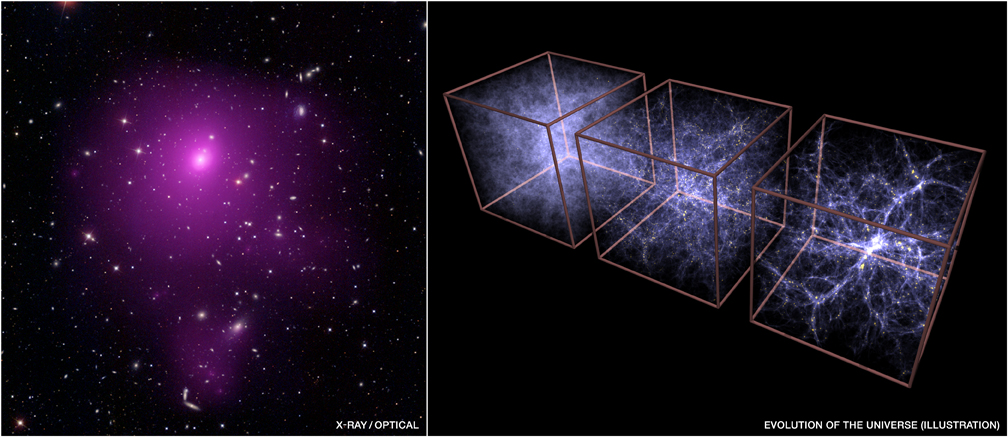
 Credit: X-ray (NASA/CXC/SAO/A.Vikhlinin et al.); Optical (SDSS); Illustration (MPE/V.Springel)
Credit: X-ray (NASA/CXC/SAO/A.Vikhlinin et al.); Optical (SDSS); Illustration (MPE/V.Springel)
Darkness into Light
One of the most surprising results of the last few years has been the discovery of "Dark Energy", a mysterious component of the Universe which acts like anti-gravity, expanding the structure of the Universe when gravity tries to pull it together. No one currently knows what dark energy is, what produces it or where it comes from, although a recent census shows that nearly three quarters of the density in the Universe is due to dark energy. One of the best ways to study dark energy is to study the largest gravitationally bound structures in the Universe, clusters of galaxies, and how these structures change with time. Astrophysicists have been doing just that, using the Chandra X-ray Observatory to measure the X-ray emission from 86 galaxy clusters (like Abell 85, shown in the X-ray image above left). Cluster X-ray emission is a good measure of the total cluster mass, so studying clusters at different distances can help constrain how large scale structure developed as the Universe aged, and the relative role of gravity and dark energy on the growth of these structures. Comparison of these observations with models of the evolution of the Universe (like the one shown above right) can be used to help constrain the effects of dark energy and to test theories of cosmology.
Published: December 22, 2008
<
HEA Dictionary ● Archive
● Search HEAPOW
● Other Languages
● HEAPOW on Facebook
● Download all Images
● Education ● HEAD
>
Each week the HEASARC
brings you new, exciting and beautiful images from X-ray and Gamma ray
astronomy. Check back each week and be sure to check out the HEAPOW archive!
Page Author: Dr. Michael F. Corcoran
Last modified Monday, 26-Feb-2024 17:34:53 EST


